A veritable treasure trove.
When Apple originated ‘in app purchasing’ a while back, I confess I was troubled by the concept. The idea is that you download an app – a game or a magazine – and can then purchase content from within that app on your iDevice. The charge would hit your iTunes account and all you need do is input your password at the point of purchase. The good thing is that, so far, Apple has kept subscriber information to itself, unlike the company which does evil for a living. The bad news is that it smacks of abuse of monopoly power. The iPad/iPhone duo represents something approaching a monopoly for mobile smart devices and a publisher in the app store has to pay 30% of his selling price to Apple. Sure, he can simply sell his app from his own web site and keep the lot, but then he loses the publicity and search visibility afforded by the AppStore. A 30% listing fee sounds horribly greedy and unfair to me.
The other frustrating thing about the iPad is how slow publishers have been in rolling out subscription priced magazines. There have been a few single issue releases at ridiculous prices or you could use the Zinio app which is OK, even if some of the more popular magazines are missing and little use is made of touch functionality.
But things seem to be changing. This week Condé Nast bit the bullet and released its The New Yorker app in the AppStore. You can buy 4 issues for $6 or 52 for $60. I downloaded the free app and bought 4, my iTunes account being billed for the cost.
Why would photographers care about a magazine whose primary claim to fame is that it features some of the best writing in the English language? Simple. A significant portion of that writing is about great photographers. And while readers mostly think of The New Yorker as a repository of prose, poetry and superb cartoons, there are more photographs by great photographers than you might think.
The very best thing about a subscription, even the four week one, is that it grants you access to the full archive of issues back to the first in December 1925. These are scanned and so-so navigable on an iPad. Better to go to your big screen desktop, login there (your iPad subscription works equally well at www.newyorker.com). The scans are high quality and in color, so you get yellowed page edges and all. You also get all the ads from that issue which is actually a fascinating thing to behold. By contrast, current issues are well formatted for reading on an iPad and navigation is well done.
The first thing I did was to use the free text search function to dial in ‘Cartier-Bresson’ and in seconds I was reading Dan Hofstadter’s riveting two part piece from October, 1989, chronicling the many hours the author had spent with the single greatest street photographer there ever was. Don’t worry, you can enlarge the original:
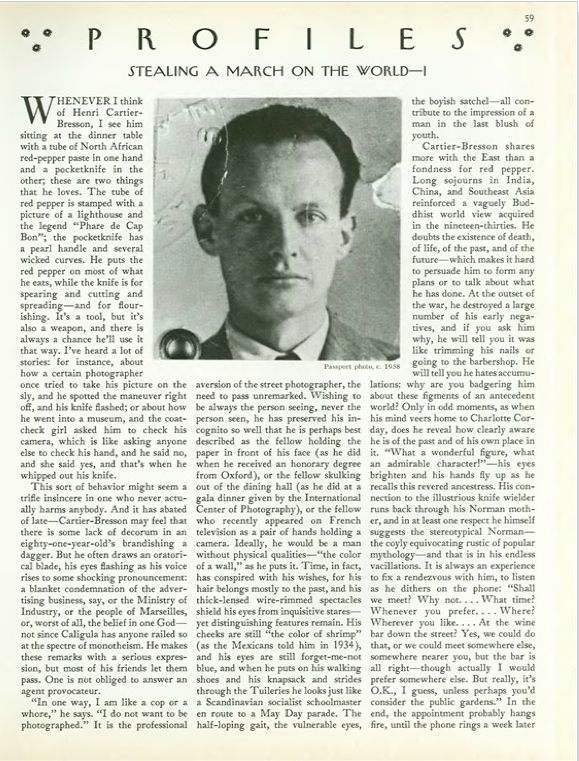
The search function on an iPad is very slow compared to the same on your desktop; the app is all of a few days old so I’m sure the kinks will be worked out soon. Search is ‘free text search’ – right now there is no contextual or topic menu. Let’s hope they fix that – you know – politics, economics, arts, etc.
This is simply a fabulous piece of writing, and includes substantive focus on HC-B’s years in Asia. There is a gripping description of how he came to take his famous picture ‘The Last Days of the Kuomintang’ with depositors jostling outside a bank trying to convert their currency before the murderous Chairman Mao took over. Few pictures show more energy and tension:
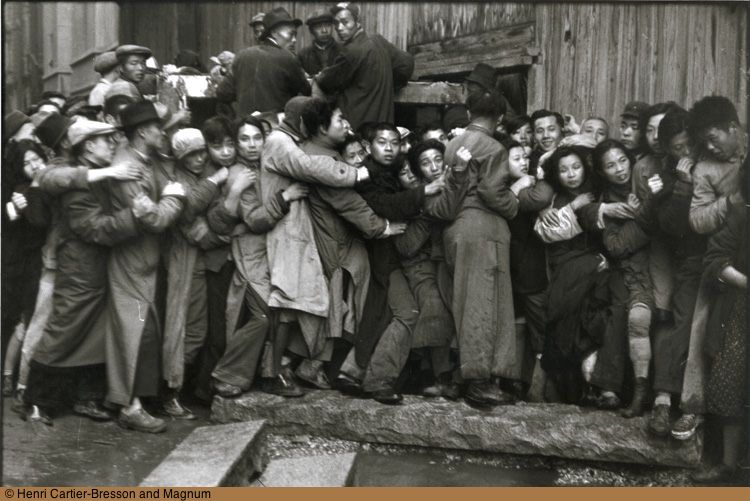
There are no fewer than 64 hits for my search:
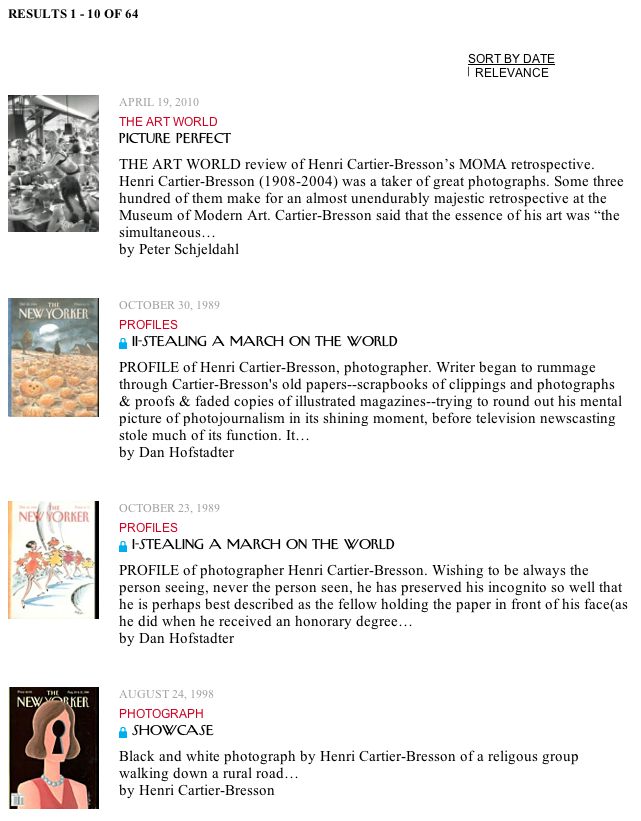
Next I dialed in another all time favorite, Irving Penn and, lo and behold, there was a show stopper picture from 1948 of one god taken by another:
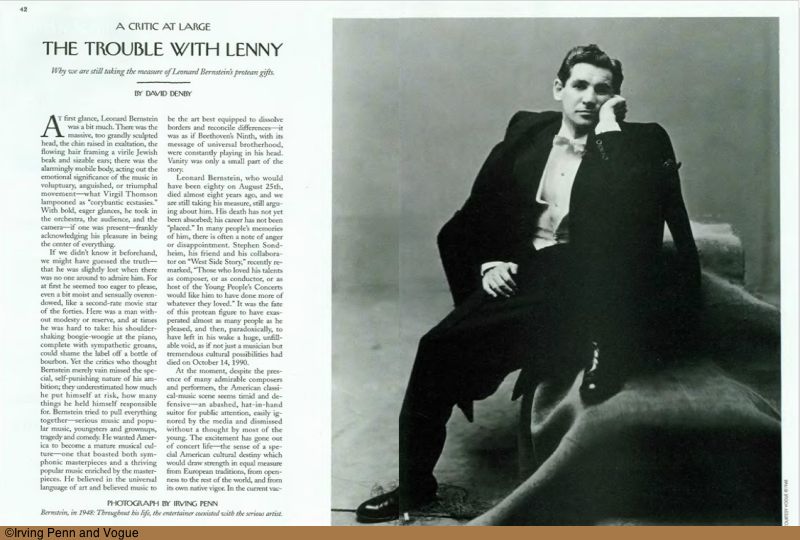
Immediately memories of a concert I was lucky to attend at Carnegie Hall in the early-1980s came flooding back, Lenny theatrically conducting Mahler’s Fourth with no less than the Vienna Philharmonic and its Boys’ Choir doing the choral bits, complete with boy soprano and all! Bernstein only had two energy levels – full and dead. My apartment at 310 West 56th Street was a three minute walk from Carnegie Hall which I could see from the window, notably the apartments atop which used to be rented to struggling musicians like Bernstein. There he conceived West Side Story and there he met an unknown young librettist named Stephen Sondheim …. talent attracts talent. I used to gaze fondly at that location, imagining the meeting of these two giants of the music world.
As for the cartoons, well they alone are reason enough to subscribe:
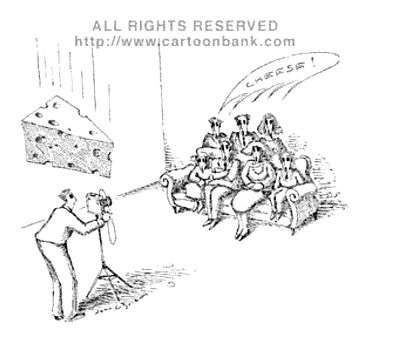
You don’t have to be a New Yorker to like The New Yorker. But if you are interested in great photography and unmatched writing about photographers, it’s a bargain. There’s just one ‘gotcha’ – renewal of your subscription is automatic when it expires so watch out and be sure to change that. Sneaky and not what I would expect of a class publisher.
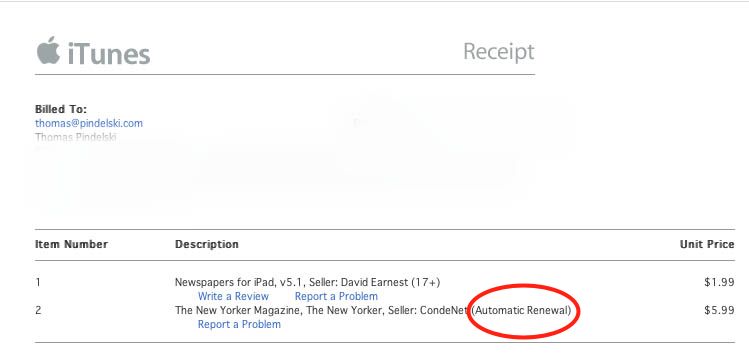
Seems you can cancel by phone:

Just think. One day Condé Nast will upload all of the issues of Vogue and Vanity Fair for on line viewing. I will be first in line.
Meanwhile, feast your eyes on this cover from December 4, 1937 and then click the picture to subscribe:
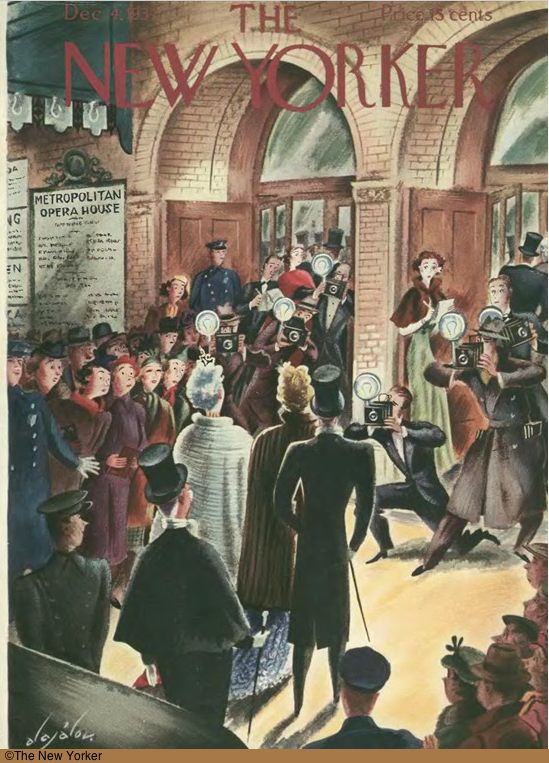
Constanin Alajalov imagines the opening night in 1937.